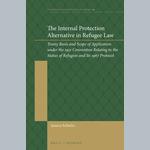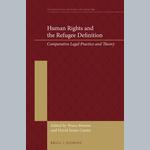NEW BOOK: The limits of protection: The internal protection alternative in refugee law
Under what conditions can states deny a refugee claim because some area within the country of origin is safe?
This is the central question in the new book The Internal Protection Alternative in Refugee Law: Treaty Basis and Scope of Application under the 1951 Convention by CMI researcher Jessica Schultz. And there are no straightforward answers.
-The internal protection alternative is one of the most important, and contested, limits to refugee status. Many states consider whether relocation is both safe and reasonable, but the actual content of these criteria and the practical consequences are widely disputed, says Schultz.
The IPA question has become a central part of the immigration debate in Norway. Following amendments to the Immigration Act in 2016, for example, Norway abandoned the ‘reasonableness’ test for persons with a safe alternative within their country of origin. This makes it possible to deport someone to an area they have never been to before, no matter how unreasonable it might be to actually settle there. Factors like disability, trauma, the absence of a caregiver (for minors), secure housing or livelihood opportunities do not invalidate, on their own, an IPA.
But whether return is reasonable is not really the main issue argues Schultz. The biggest challenge is determining what qualifies as ‘safe’. Recent research from Afghanistan reveals that returnees not only face a deteriorating security situation but they have distinct protection and assistance needs arising from their migration history, age, gender, and situation of internal displacement.
- We also see that the IPA and IPA-like assessments are spreading to other aspects of refugee law, like decisions to revoke status once an area of the home state is relatively secure. This is part of a broader trend to reduce both the duration and geographic scope of protection that refugees have traditionally received. And unfortunately, we lack sufficient evidence about the consequences of return especially for women and refugees who have limited ties to their ‘home’ countries, she says.
The book considers how to interpret the IPA in a way that best preserves the rights of returnees, and ensures that they can relocate in a safe and dignified manner.
Publications

The Internal Protection Alternative in Refugee Law: Treaty basis and scope of application under the 1951 Convention on the Status of Refugees and its 1967 Protocol

